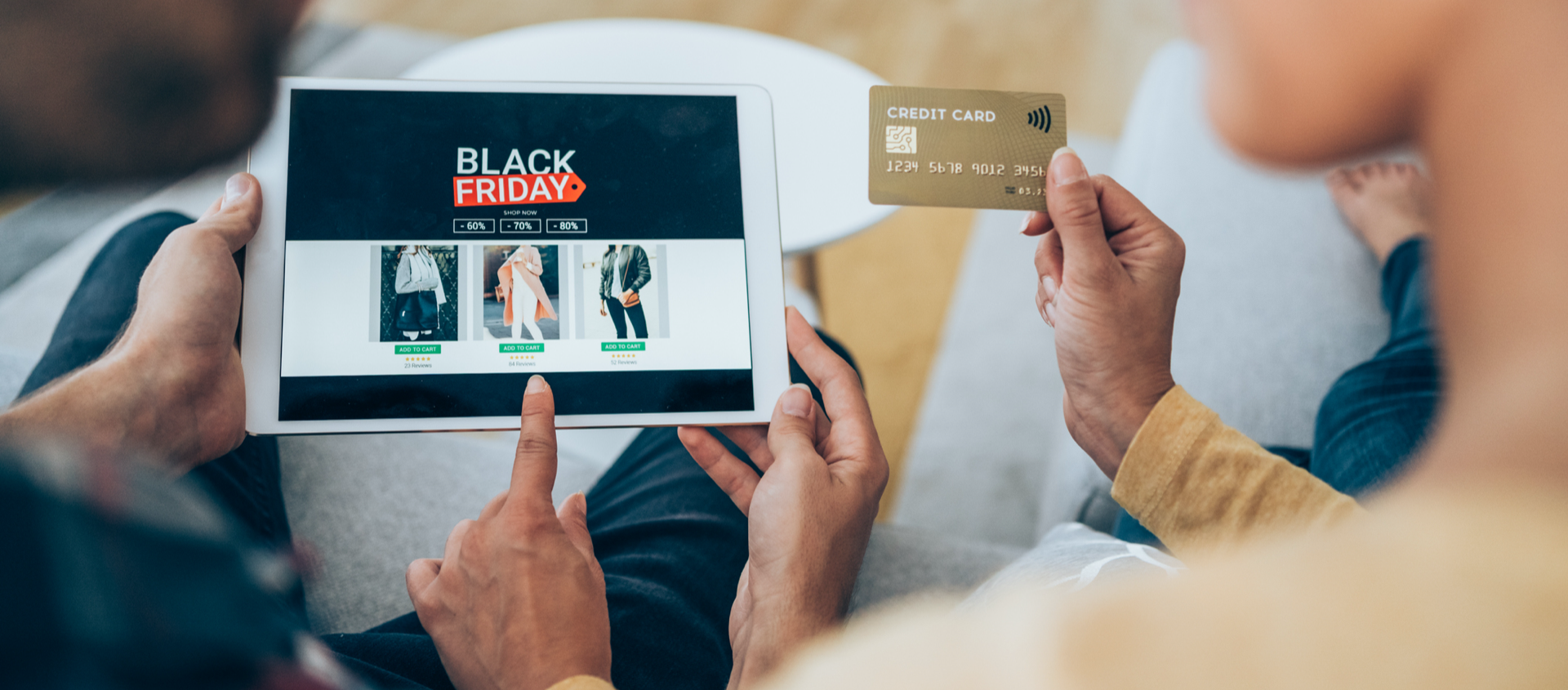
How to shift from a B2B business model to D2C e-commerce model
It should come as no surprise that the last 18 months has had a tremendous impact on the ecommerce industry. Not only are more people shopping online than ever before, but with physical distancing restrictions in place there was a change in what people were buying online too, with many products traditionally purchased in-store becoming hot online commodities (the toilet paper shortage still baffles me). It’s undeniable - consumer behaviour is shifting - and if recent times have taught us anything, it’s that businesses need to be ready to adapt to these changing demands in order to survive (and thrive).
Both the appeal (and difficulty) with online shopping is the wide variety of options readily available for consumers. How can businesses and brands stand out amongst the noise? Customers are also more demanding of brands than ever before - purchase behaviour is no longer simply dictated by product, but through the meaningful connections brands are able to foster with their customers through personalised and bespoke experiences that align with their values and needs. If you’re operating in a traditional B2B business model, such a relationship is difficult to foster as you have no control over the comms with your end customer.
Operating as a B2B wholesale business has its appeal: you are able to move larger quantities of stock through long-term relationships, whilst also leveraging the influence and reach of other businesses to raise your brand awareness and distribute products to the end consumer.
As a D2C business however, you are able to take full ownership of your customer journey and experiences, nurturing relationships and as a result, controlling the growth of your business. By taking out the retail 'middle-man' associated with operating wholesale you gain direct access to your customers and their data, data that is able to inform ongoing business strategies and decisions for both D2C and B2B. If you ask us, access to that data is invaluable.
If you’re reading this, it’s likely you’re considering making the transition from B2B to D2C, a task that requires delicate handling, and can be an extremely daunting task for many businesses. Lucky for you, we’ve helped numerous brands and businesses take on the D2C challenge and come out the other side (much) better for it, and we’re to give you our top tips in doing so:
- Define your D2C strategy
Before you do anything else, you need to define exactly what your D2C strategy will be. Ask yourself these questions:
- Who are my target customers?
- What value can I provide them?
- What benefit do they get from purchasing from us directly?
- Are they used to purchasing my products / category online or in-store?
- Do I want D2C to replace or work alongside B2B?
- What operational and logistical changes need to be made (e.g. shipping individual items rather than bulk)?
The transition to D2C isn’t going to happen overnight, so you’re more than likely going to be juggling a hybrid business model of both B2B and D2C for a while, thus it’s important to consider what this will look like while defining your strategy.
Those that are already familiar with your brand would have likely shopped your products via your wholesale partners, and you will need to decide whether you wish to capitalise on the brand awareness you already have in market (redirecting these customers to purchase directly from your online store), or if you want to attract new customers.
Whichever path you choose, you’re going to need to consider how you can differentiate your online shopping experience to attract customers to purchase your products directly from you rather than your retailers.

- Communicate and manage your current relationships
B2B businesses require a considerable investment of time and money in building relationships with your wholesale and distribution partners, so while you’re building out your D2C business (which as mentioned takes time) careful management of these relationships is essential to ensure you’re able to maintain a successful B2B foundation.
Communication is key when it comes to relationship management, and we highly recommend you engage with your partners early on in the process so as not to burn any bridges. You are essentially becoming a direct competitor to your wholesalers, so it’s important to consider when putting together your strategy how you’re able to differentiate yourself from them (for example, some brands will decide to have different product ranges available between B2B and D2C channels, ensuring both parties have a competitive advantage).
- Consider the logistics & fulfilment
A very real barrier for many businesses looking to transition to D2C is transforming your logistics. Your current logistics will likely be set up to manage the handling of sporadic large shipments of your products in cartons or pallets, but the reality of e-commerce is that you’ll be sending out high volumes of single unit orders daily. Whether you currently do this in-house or through a 3PL, you’ll need to address whether this shift is sustainable where it is, or if you need to transition to another logistics solution.
Managing the volume of orders and inventory is just one part however, and you’ll also need to consider:
- Packaging - a pleasant unboxing experience can have a tremendous impact on a customer’s perception of your brand. How will you package each order? Will you use satchels or boxes? Ensure you investigate shipping costs to choose the best option for your business.
- Fast Delivery - customers expect fast delivery when shopping online. Are you able to facilitate this? Does your current courier / delivery partner offer express delivery, or have an e-commerce solution you can utilise?
Shopify integrates with a number of inventory and shipment platforms that help make managing logistics easier.

- Invest in your ecommerce website
Surprise, surprise, you’re going to need a website. But not just any website. Your website has an extremely important role to play - introducing your prospective customers to your business, showing them around, and convincing them to purchase. But your website isn’t human, so how can different elements of your site achieve these tasks?
- Design that is clean, simple, consistent and mobile-friendly
- Intuitive navigation and advanced search that makes it easy to browse
- Brand messaging and proposition communicated clearly
- High quality product imagery
- Accurate & detailed product information
- Strong calls to action
- A streamlined checkout experience
A positive user experience (UX) is going to bring customers back time and time again. If your website is cluttered, over-complicated, and difficult to navigate, it’s pretty unlikely customers will be willing to return (unless you’re giving away free puppies with every purchase… are you?).
- Service your customers
It’s all in the name; Direct-To-Consumer. You no longer have a middle man to talk and sell for you - this job will now fall onto your team to manage, and you can expect an influx of inquiries across your socials, email, live chat, and phone before a sale has even occurred. And it doesn’t stop once an order is placed - perhaps a customer needs to make a change to their order, or is following up on its delivery date, or the product has arrived faulty. No matter what the scenario, your team will need to have a response and solution ready.
Of course, if you’ve followed our advice above and developed an optimised user experience on your website, you should be able to reduce the number of customer service queries you do receive, however there will always be those that prefer to reach out for support, and you need to be there ready to hold their hand (not literally, we’re still in a pandemic and this is e-commerce).
Depending on the resources you have available, you might need some help in both managing and understanding your customer queries. Luckily for you there are some incredible tools available for streamlining and automating your processes. Our favourite is Gorgias, a robust help-desk tool that integrates seamlessly with Shopify and allows you to manage all of your customer touch points in one place (yes, that includes messages on socials, emails, phone calls, and more), as well as automating responses to frequently asked queries (like ‘what’s your returns policy’ and ‘where’s my order’?)
Excellent customer service usually translates into repeat purchases, loyalty, and advocacy, thus should be a top priority for any business.
In a nutshell?
The transition from B2B to D2C is a significant one, but it doesn’t have to be a daunting one. Using the tips above, and an experienced partner by your side (hello), there’s no reason why making the leap shouldn’t be a prosperous one for your business.
Eager to find out more about how 30Acres can help your business make the move? We’d love to chat! Shoot us an email at hello@30acres.com.au



Leave a comment
This site is protected by hCaptcha and the hCaptcha Privacy Policy and Terms of Service apply.